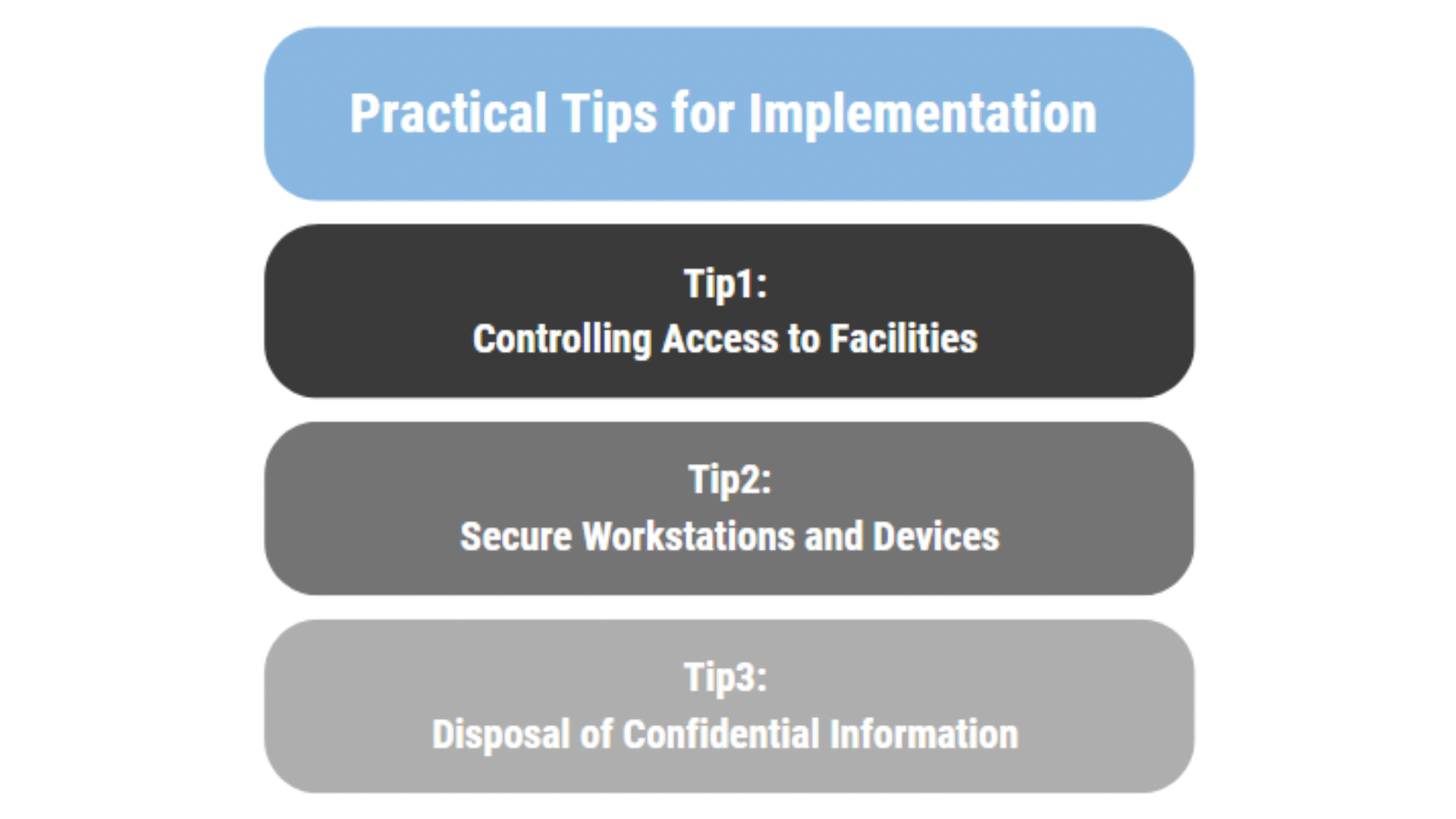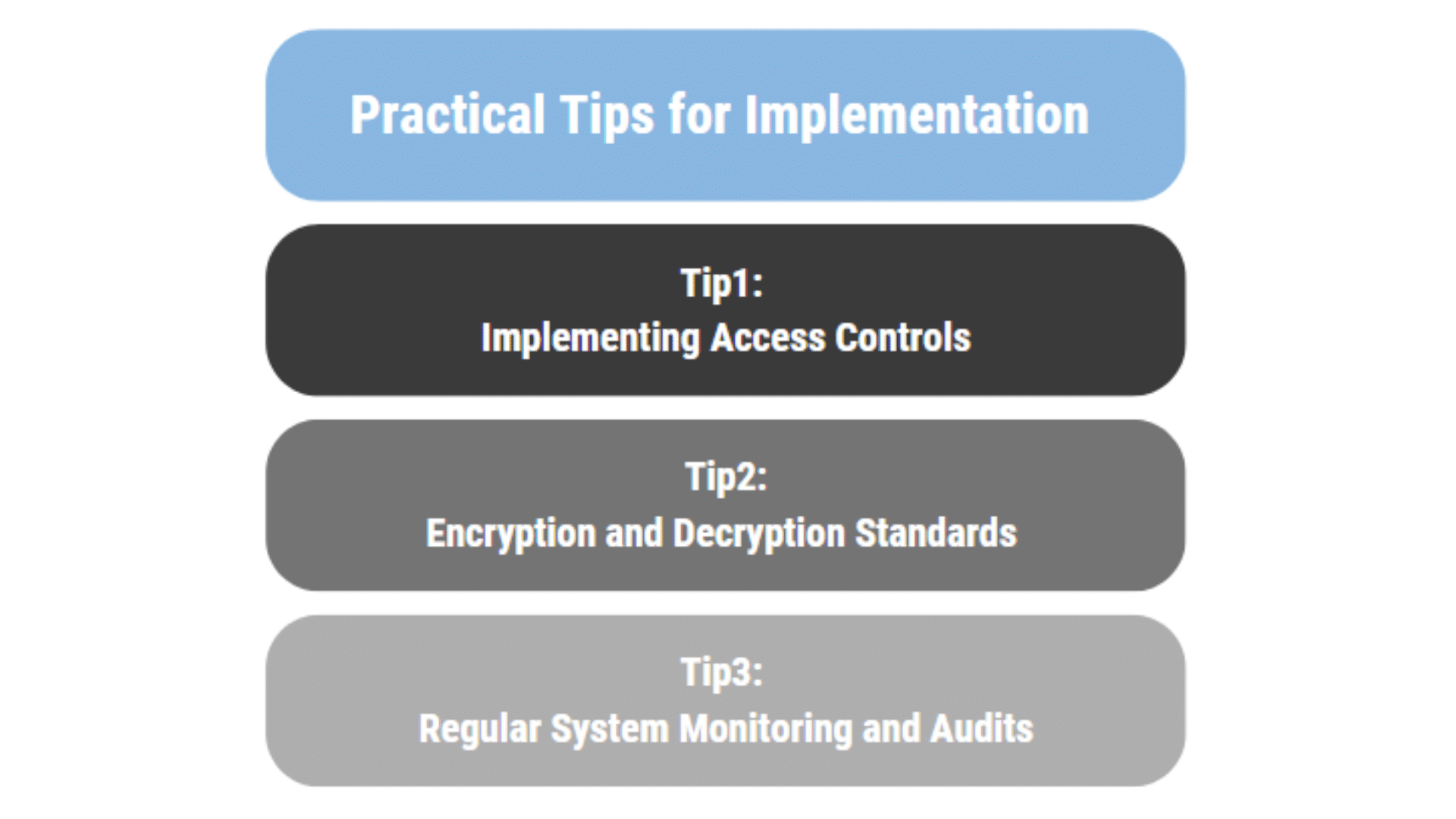In today’s rapidly evolving healthcare landscape, maintaining HIPAA compliance is more crucial than ever. Protecting patient information is a legal requirement and a cornerstone of trust between healthcare providers and their patients.
However, many healthcare offices face significant challenges in this area, from keeping up with constant regulatory changes to ensuring that all employees adhere to strict privacy and security protocols.
These challenges can make HIPAA compliance seem like a daunting task, leading to potential vulnerabilities that could result in costly penalties or, worse, breaches of patient confidentiality.
Understanding the complexities of HIPAA compliance and implementing the necessary safeguards can be overwhelming for many healthcare providers.
Through this article, John Lynch & Associates aims to alleviate some of that burden by focusing on three essential areas of HIPAA compliance: administrative, physical, and technical safeguards.
By breaking down these components into practical, actionable tips, we want to provide medical offices with the tools needed to protect patient information effectively and efficiently.
At John Lynch and Associates, we understand the unique pressures that healthcare offices face in maintaining HIPAA compliance. Our expertise in navigating the intricacies of healthcare regulations allows us to offer tailored solutions that help our clients meet and exceed compliance standards.
Whether you are looking to enhance your current practices or need guidance on where to start, we are here to help you safeguard your patients’ information and ensure your medical office remains compliant with HIPAA regulations.
Administrative Safeguards: Building a Strong Foundation
Understanding Administrative Safeguards
Administrative safeguards form the backbone of HIPAA compliance for healthcare providers. These safeguards involve the policies and procedures that manage the selection, development, and implementation of security measures to protect patient information. They are crucial because they establish the framework for how your medical office will approach HIPAA compliance on an organizational level.
Without robust administrative safeguards, it is challenging to ensure that your physical and technical safeguards will be effective. These measures provide a foundation that supports the consistent application of security practices across your organization.

Practical Tips for Implementation
Tip#1: Conducting Regular Risk Assessments
Risk assessments are vital for identifying potential threats and vulnerabilities to your patient data. These assessments help you understand where your medical office might be at risk and what steps you need to take to mitigate those risks.
Regularly scheduled assessments allow you to stay ahead of new threats and adjust your security measures accordingly.
When conducting a risk assessment, involve key stakeholders from various departments to ensure a comprehensive analysis. This process should include identifying all forms of protected health information (PHI) your office handles, evaluating the effectiveness of current safeguards, and determining the likelihood and impact of potential risks.
Tip#2: Developing and Updating Policies and Procedures
Your policies and procedures should clearly outline how your office handles PHI and adheres to HIPAA regulations. These documents should be living entities that evolve with changing laws, technological advancements, and emerging threats.
Ensure that your policies cover all aspects of HIPAA compliance, including the handling of PHI, breach notification procedures, and the roles and responsibilities of employees. Regularly review and update these policies to reflect the latest requirements and best practices. This ensures that your staff is always informed and prepared to comply with HIPAA regulations.
Tip#3: Employee Training Programs
Even the most comprehensive policies and procedures are ineffective if your staff is not trained to follow them. Regular training programs are essential for ensuring that all employees understand their roles in maintaining HIPAA compliance.
Training should cover a wide range of topics, including the importance of HIPAA compliance, specific policies related to their roles, how to recognize potential security threats, and the correct procedures for reporting breaches.
Make training sessions interactive and practical, using real-life scenarios to reinforce key concepts. Additionally, consider implementing periodic refreshers to keep HIPAA compliance top of mind for your team.
Physical Safeguards: Protecting Your Office Environment
Understanding Physical Safeguards
Physical safeguards are the security measures designed to protect the physical environment where patient information is stored and accessed. These safeguards are essential for preventing unauthorized individuals from physically accessing patient records and other sensitive data.
They play a critical role in maintaining HIPAA compliance for medical offices by ensuring that the areas where PHI is stored, processed, or accessed are secure.
Inadequate physical safeguards can lead to breaches that may compromise the confidentiality, integrity, and availability of patient information. Therefore, it is crucial to implement effective physical safeguards that address the unique needs of your medical office.

Practical Tips for Implementation
Tip#1: Controlling Access to Facilities
One of the primary goals of physical safeguards is to control who can access your facility and where they can go within it. Implementing strict access controls helps prevent unauthorized individuals from entering areas where PHI is stored or handled.
To control access effectively, consider using a combination of measures such as keycards, biometric scanners, and security cameras. Limit access to sensitive areas like record rooms or server rooms to only those employees who need it to perform their job functions.
Also, consider implementing visitor management procedures, such as requiring visitors to sign in and wear identification badges while on the premises.
Tip#2: Secure Workstations and Devices
Securing workstations and devices is another critical aspect of physical safeguards. Unauthorized access to computers, mobile devices, or other equipment used to handle PHI can lead to data breaches.
To protect your workstations, ensure that they are positioned in a way that prevents unauthorized individuals from viewing screens or accessing hardware. Use physical locks for workstations, laptops, and other portable devices when they are not in use.
Additionally, ensure that your office has a policy for securing mobile devices, particularly if they are taken off-site. This might include remote wiping capabilities and encryption to protect data in case a device is lost or stolen.
Tip#3: Disposal of Confidential Information
Improper disposal of physical records or outdated electronic devices can result in unauthorized access to PHI. To maintain HIPAA compliance, it is essential to have clear procedures in place for the disposal of confidential information.
For physical records, use cross-cut shredders or secure shredding services to destroy documents that are no longer needed. For electronic devices, ensure that hard drives and other storage media are thoroughly wiped or physically destroyed before disposal. It’s also important to maintain a disposal log to track when and how each item was disposed of, providing an audit trail in case of an inquiry.
Use the Healthcare Compliance Review Checklist to assess privacy, security, and administrative safeguards across your organization.
Technical Safeguards: Securing Electronic Protected Health Information (ePHI)
Understanding Technical Safeguards
Technical safeguards are the security measures used to protect electronic protected health information (ePHI). These safeguards are crucial for ensuring that only authorized individuals can access sensitive patient data, and that this information remains secure when stored or transmitted electronically.
As medical offices increasingly rely on digital systems for managing patient information, robust technical safeguards are essential to maintaining HIPAA compliance.
Technical safeguards are designed to protect the confidentiality, integrity, and availability of ePHI. They include a range of measures such as access controls, encryption, and regular system monitoring. Implementing these safeguards effectively can help prevent data breaches, unauthorized access, and other security incidents that could compromise patient information.

Practical Tips for Implementation
Tip#1: Implementing Access Controls
Access controls are the first line of defense in protecting ePHI. These controls ensure that only authorized personnel can access electronic patient records and other sensitive information. By restricting access to ePHI, you can significantly reduce the risk of unauthorized data breaches.
To implement effective access controls, start by assigning unique user IDs to each employee who requires access to ePHI. This allows you to track who is accessing what information and when.
Additionally, use role-based access control (RBAC) to limit access to only the information that each employee needs to perform their job functions. For example, administrative staff may need access to billing information but not to detailed medical records. Ensure that access is regularly reviewed and updated as employees’ roles change.
Tip#2: Encryption and Decryption Standards
Encryption is a critical component of protecting ePHI both at rest and in transit. By converting sensitive information into a format that cannot be easily read by unauthorized users, encryption helps ensure that even if data is intercepted or accessed without permission, it remains secure.
When implementing encryption, follow industry-standard protocols to ensure that your data is adequately protected. This includes encrypting data stored on servers, workstations, and portable devices, and encrypting email communications that contain ePHI.
Additionally, make sure that decryption keys are stored securely and only accessible to authorized personnel. Regularly review and update your encryption standards to keep pace with technological advancements and emerging threats.
Tip#3: Regular System Monitoring and Audits
Ongoing system monitoring and auditing are essential for detecting and responding to potential security threats. By continuously monitoring your systems, you can identify unusual activity or unauthorized access attempts in real-time, allowing you to take immediate action to protect ePHI.
Set up automated alerts to notify your IT team of suspicious activities, such as multiple failed login attempts or access to large volumes of ePHI outside of normal working hours. Conduct regular audits of your systems to ensure that all access controls, encryption measures, and other technical safeguards are functioning as intended.
These audits should include a review of access logs, system configurations, and any incidents. By maintaining a proactive approach to monitoring and auditing, you can stay ahead of potential threats and ensure that your technical safeguards remain effective.
Conclusion
Maintaining HIPAA compliance is a complex but essential task for healthcare offices. By focusing on the three critical areas of administrative, physical, and technical safeguards, you can create a robust framework that protects patient information and reduces the risk of breaches.
These safeguards are not just about meeting regulatory requirements they are about preserving the trust that your patients place in your care.
To recap, administrative safeguards lay the foundation by establishing clear policies, regular risk assessments, and comprehensive employee training programs.
Physical safeguards protect the physical environment where patient information is stored, ensuring that access to sensitive areas and devices is tightly controlled.
Finally, technical safeguards secure electronic protected health information (ePHI) through access controls, encryption, and continuous system monitoring and auditing.
By implementing these practical tips, your office can enhance its HIPAA compliance efforts and better protect the sensitive information entrusted to you. However, achieving and maintaining compliance requires ongoing attention and adaptation to new challenges and regulations.
At John Lynch and Associates, we understand the pressures that come with ensuring HIPAA compliance. Our team of compliance experts is dedicated to helping healthcare offices like yours navigate the complexities of healthcare regulations.
Whether you need assistance with conducting risk assessments, updating policies, or implementing innovative security measures, we are here to provide the tailored solutions you need to stay compliant and secure.
Ready to Talk?
Related Articles

Reducing Risk in Tribal Health with Staff Compliance Training

Audit Readiness in Behavioral Health: How Compliance Officers Lead Beyond the Checklist


